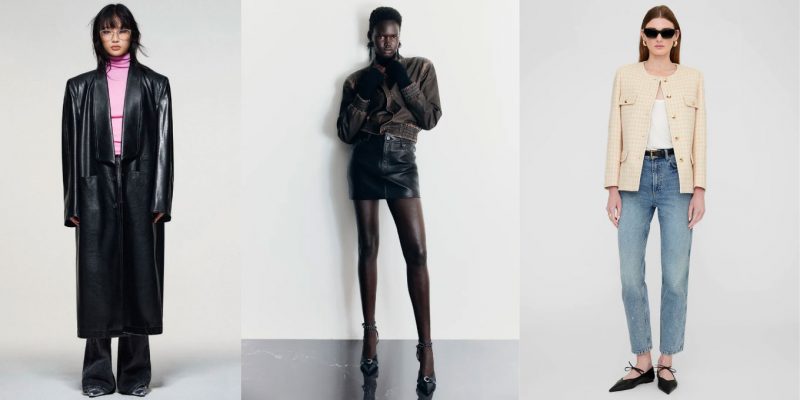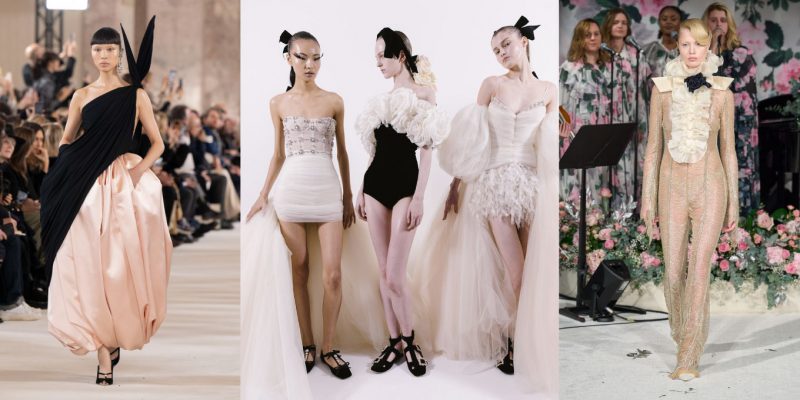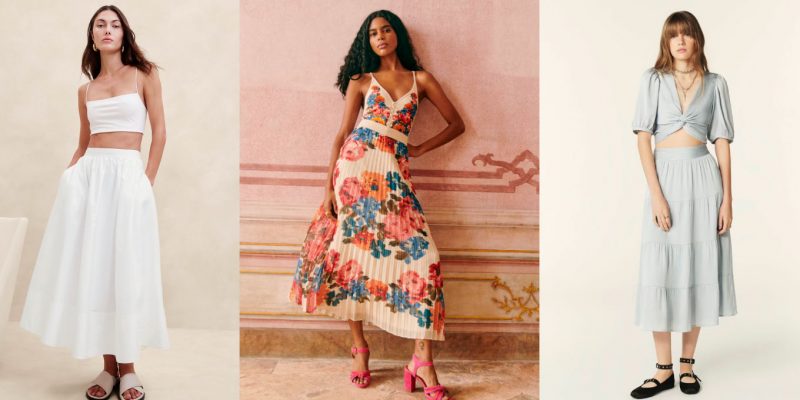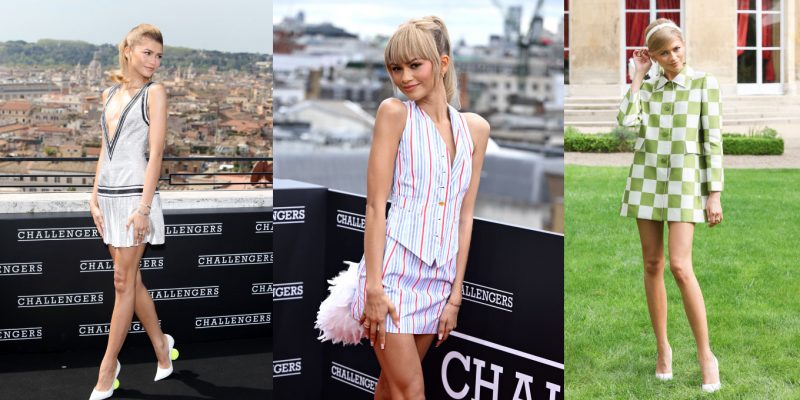Trends
Diane von Furstenberg’s New Tribute Collection Pays Homage to Her Iconic Wrap Dress
"It made me famous. It made me free, but it gave other women the feeling of freedom as well—an amazing dialogue was created from it. It was magical."
by : Wendy Kaur- Mar 20th, 2024
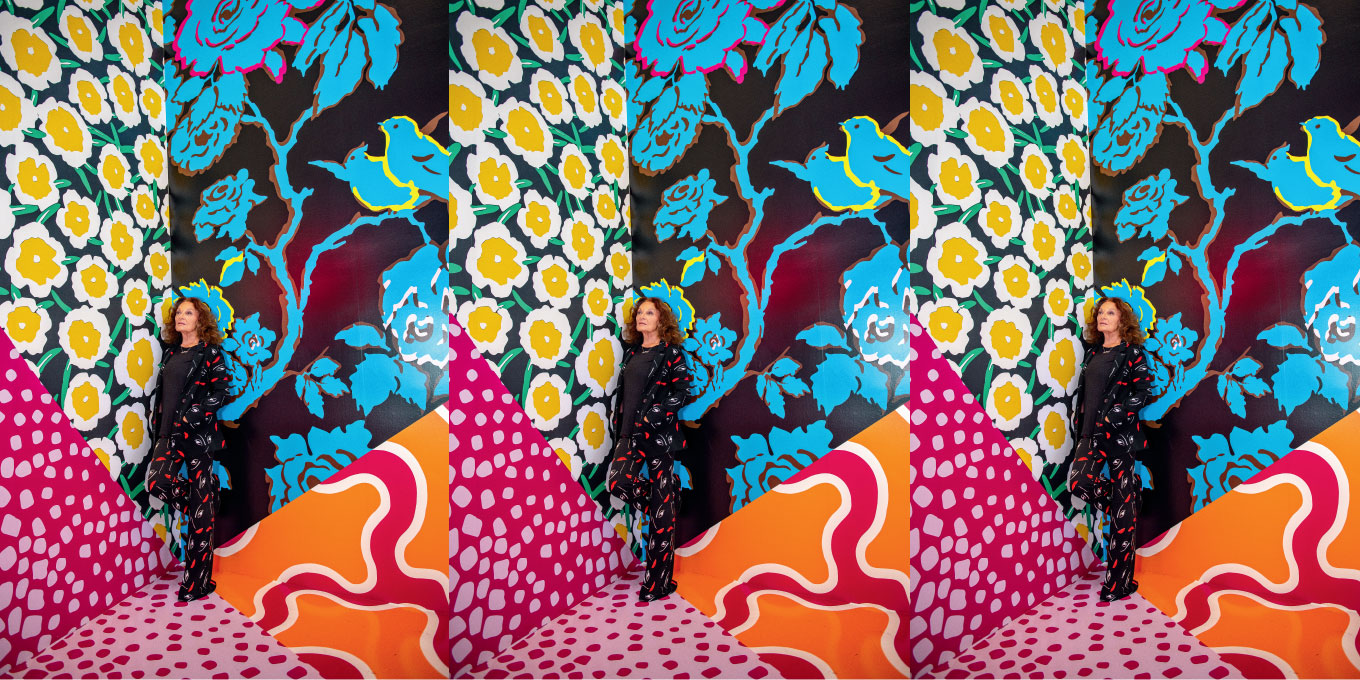
COURTESY OF THE DIANE VON FURSTENBERG ARCHIVES
Diane von Furstenberg can’t believe it’s been five decades since she launched the design that would not only come to define her career but also become a sartorial symbol for feminism: the wrap-dress. “It’s crazy because I started [my career] really young—in my 20s,” she says. “I had achieved everything by the time I was 28, so I was certain that I was going to die very young because I had already done so much. Instead, I’ve made it to 76.”
It’s late October, and von Furstenberg is at her country home in Connecticut. Reached via Zoom, she looks cozy-chic in a black turtleneck and cat-eye glasses, her signature wavy auburn hair framing her face. The acclaimed Belgian-American designer is currently in a phase of celebrating the past while also looking toward the future. Her just-released spring/summer 2024 collection—entitled Wrap 50—pays tribute to the original design. “The [dress’] Italian fabric was originally a cotton-rayon jersey, but for the past 25 years, it has been [made from] 100 percent silk jersey,” she says.
Back in the late 1960s, when von Furstenberg—then Diane Halfin—left the University of Geneva (where she had studied economics), she knew she wanted to be a woman who was in charge of her life but had no idea what that might look like. “I knew the feeling [I wanted], but I didn’t know how I would get to that feeling,” she says. Her first job was working for an agent in Paris who represented the best fashion photographers of the time, including David Bailey and Jeanloup Sieff. “I was his assistant, and I didn’t really do much except answer the phone and tell everyone he wasn’t there. I was interested in fashion, but I didn’t know how to get into fashion.”
While she was on holiday in Capri, a chance encounter with scarf printer Angelo Ferretti—who made scarves for designers such as Emilio Pucci and Valentino—gave her the entry she needed. “He said that if I was interested in fashion, I should see his scarf-printing business in Como.” So von Furstenberg made the move to Como, Italy, and she watched and learned. She also worked with a colourist, mixing and developing the colour palettes for the fabrics. “At that time, if you were a colourist in Italy, that meant your father was also a colourist, as was your grandfather and so on,” she explains. “So it was truly an inherent craft.” The apprenticeship allowed von Furstenberg to learn how to make illustrations, and she consumed everything she could about the art of printing.
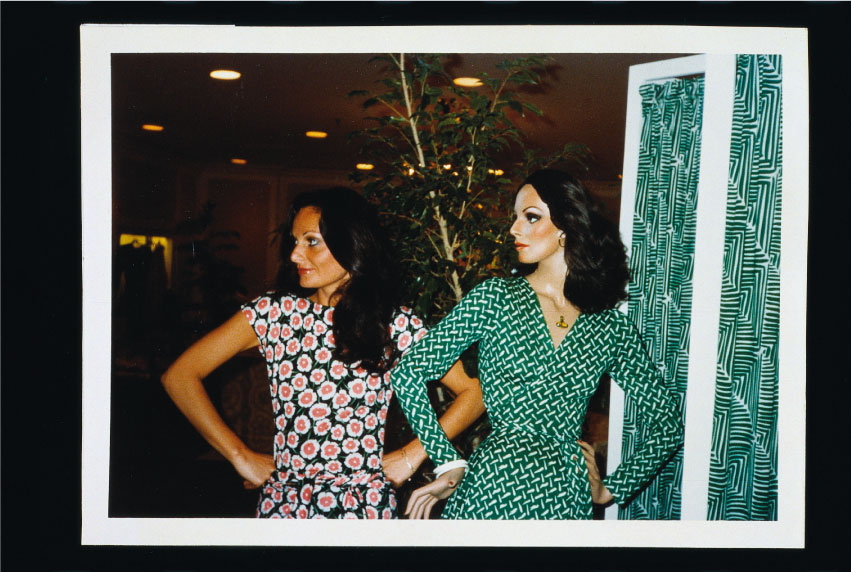 COURTESY OF THE DIANE VON FURSTENBERG ARCHIVES
COURTESY OF THE DIANE VON FURSTENBERG ARCHIVESIn order to expand his business, Ferretti bought an abandoned stocking factory next door. (The recent pantyhose rage had made stockings go out of style.) When they walked into the building, they saw a myriad of knitting machines but had no idea what to do with them, so Ferretti started exploring how he could use these new tools. “He called yarn manufacturers—like DuPont—and said he wanted to try using a thicker yarn,” says von Furstenberg. “That’s how the [original] jersey fabric was invented.” Bearing witness to all of this, von Furstenberg came up with the idea of printing on the newly born material. “I started to think about what we could do with the printed jersey fabric,” she says. Ideas—such as T-shirt dresses and polo-shirt dresses—started to form, but they didn’t seem quite right. “[Still], something was incubating.”
In January 1969, von Furstenberg flew to New York for her birthday and to visit her boyfriend—who also happened to be Prince Edouard Egon von Fürstenberg, a descendant of the former German royal family of the same name. When she arrived, she immediately fell in love with America. “It was a world that was so different from Europe,” she remembers. “It just seemed so exciting. Because [New York] was dirty and dangerous, it was cheap.” And because it was cheap, the city attracted all kinds of artists. Egon’s social status garnered him a host of invitations, and von Furstenberg found herself in the company of creatives like Andy Warhol and Robert Rauschenberg. She also met young designers like Stephen Burrows, Giorgio di Sant’Angelo and Halston. “It was an exciting time,” she muses.
“It made me famous. It made me free, but it gave other women the feeling of freedom as well—an amazing dialogue was created from it. It was magical.”
It was also an education. Von Furstenberg discovered a fashion aesthetic that was so different from what she was familiar with in Europe. A month later, on the plane ride home, she started thinking about what she could create and then bring back to the U.S. “When I arrived at the factory in Como, I saw the jersey fabric and [realized] it was an opportunity,” she says. From there, things started to move quickly—in her personal life as well. By October 1969, von Furstenberg was married, pregnant and back in New York with a suitcase full of dresses. During her first two years there, she worked out of her and her husband’s apartment and came up with a little wrap-top, matching skirt and matching pants. The ensemble morphed into a singular dress. “That’s how it began,” she says. “The first versions had a snake print and a leopard print.”
A meeting with Vogue editor Diana Vreeland in 1970 proved to be a critical turning point. The connection had been made through designers Bill Blass and Oscar de la Renta. By this time pregnant with her second child, von Furstenberg emptied her suitcase full of dresses in Vreeland’s office. She couldn’t believe where she was. “I felt like I was in Ali Baba’s castle,” she says with a laugh. “There were clothes and jewellery everywhere.” Vreeland strode in, sporting red lips and nails, a large cigarette holder between her fingers. She took hold of von Furstenberg’s face and commanded, “Chin up!” The editor had two young models with her: one was Pat Cleveland, and the other was Loulou de la Falaise, who would go on to become the muse of Yves Saint Laurent. “They tried on the clothes, and Diana was saying, ‘Wonderful, wonderful!’” she recalls. “Before I knew it, I was being thrown out of the office. I packed my clothes back into the suitcase, not knowing what had just happened to me.” Vreeland’s assistant instructed von Furstenberg to put herself on the fashion calendar and place an ad in Women’s Wear Daily.
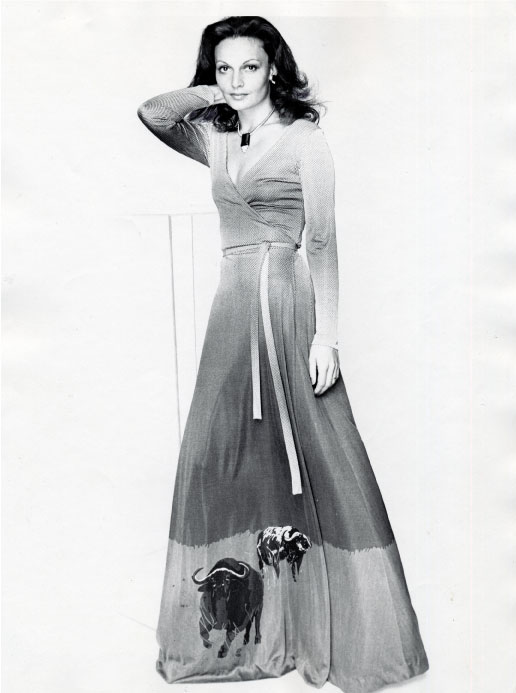 COURTESY OF THE DIANE VON FURSTENBERG ARCHIVES
COURTESY OF THE DIANE VON FURSTENBERG ARCHIVESAs her marriage to Egon unravelled (they separated in 1972 and eventually divorced in 1983), von Furstenberg was forging a new identity for herself in the fashion world. The wrap-dress was showcased to buyers in 1973 and available on shop floors the following year. The women’s liberation movement was a fitting backdrop to the wrap-dress’ rapid rise as women identified with the freedom the free-flowing designs represented. They also loved the combination of elegance and practicality. “Women loved the quality of the fabric and the fact that it didn’t wrinkle,” says von Furstenberg. Thanks to her expertise in printing, her patterns boasted a unique movement. “Whether it [had a print of ] a snake or a fish, or even something like tree bark, my dress moulded itself to a woman’s body and the print flowed all around her.”
In March 1976, the dress—worn by none other than von Furstenberg herself— made its way to the cover of Newsweek and was lauded as a symbol of feminism. In the accompanying article, the designer was hailed as the “most marketable woman since Coco Chanel.” By the end of the year, a whopping one million had been sold in major department stores like Macy’s and Bloomingdale’s.
Half a century later—and after three wrap-dresses joined the permanent collection in the Metropolitan Museum of Art’s Costume Institute—the original designs aren’t far from von Furstenberg’s mind. For the Wrap 50 collection, 10 styles bring back the python print—a personal DVF favourite. The remaining seven prints are variations of a black-and-white crossword-puzzle print, inspired by the time her name was the answer to a clue in The New York Times. But the wrap-dress doesn’t hog the spotlight—the commemorative line offers jumpsuits and separates as well.
Von Furstenberg likes to say that she didn’t make the wrap-dress but that it made her. “It brought me confidence, it brought me money and my career went up, up, up,” she says. “It made me famous. It made me free, but it gave other women the feeling of freedom as well—an amazing dialogue was created from it. It was magical.” But what is even more astounding to her is that the dress still lives on. “We invent a new wrap-dress every 20 years, and it’s the young women who discover it all over again,” she says. “That, I think, is the most incredible thing of all.”
Newsletter
Join our mailing list for the latest and biggest in fashion trends, beauty, culture and celebrity.
Read Next
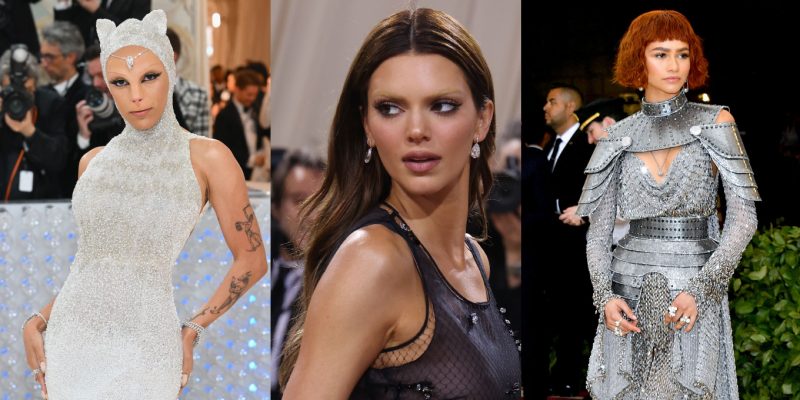
Beauty
The Best Met Gala Beauty Looks Of All Time
From Taylor Swift's 'Bleachella' era to Rihanna's iconic 2011 braids, meet the best beauty moments in Met Gala history.
by : Katie Withington- Apr 26th, 2024
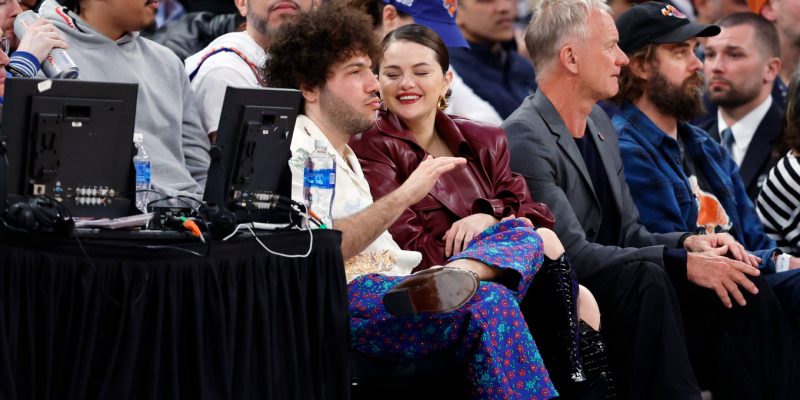
Culture
Benny Blanco Says He Fell in Love With Selena Gomez Without ‘Even Noticing’ It
Allow Benny Blanco to tell the straight-from-a-rom-com story of how he realized his feelings for his girlfriend and longtime friend.
by : Alyssa Bailey- Apr 26th, 2024
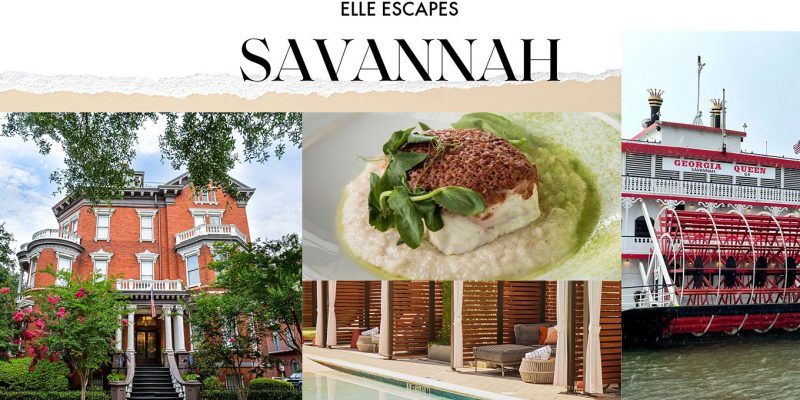
Culture
ELLE Escapes: Savannah
Where to go, stay, eat and drink in “the Hostess City of the South.”
by : ELLE- Apr 15th, 2024

